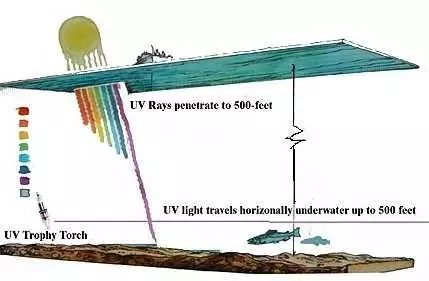Does color matter?
This is a serious problem, and fishermen have long sought its secrets. Some fishermen think the choice of color is crucial, while others say it doesn’t matter. Scientifically speaking,
There is evidence that both views may be correct. There is good evidence that choosing the right color may improve your chances of attracting fish when environmental conditions are right, but science can also show that in other situations, color is of limited value and less important than thought.
Fish are more than 450 million years old and are remarkable creatures. Over thousands of years, they have made many superb adaptations in the Marine environment. Living in a water world is not easy, with high environmental opportunities as well as serious challenges. For example, sound is five times faster in water than in air, so water is much better. The ocean is actually a very noisy place. By having good auditory perception, using their inner ear and lateral line to detect prey or avoid enemies, fish can take advantage of this. The water also contains unique compounds that fish use to identify other members of their species, find food, detect predators and perform other functions when breeding time comes. Fish have developed a remarkable sense of smell that is thought to be a million times better than humans.
However, water is a serious visual and color challenge for fish and fishermen. Many of the characteristics of light change rapidly with water flow and depth.
What does the attenuation of light bring?
The light humans see is only a small fraction of the total electromagnetic radiation received from the sun, what we see as the visible spectrum.
The actual color within the visible spectrum is determined by the wavelength of the light:
Longer wavelengths are red and orange
The shorter wavelengths are green, blue and purple
However, many fish can see colors that we don’t, including ultraviolet light.
Ultraviolet light travels farther in water than most of us realize.
So some fishermen think: metal halide fishing lamp attract fish more effectively
When light enters the water, its intensity decreases rapidly and its color changes. These changes are called attenuation. Attenuation is the result of two processes: scattering and absorption. The scattering of light is caused by particles or other small objects suspended in the water – the more particles, the more scattering. The scattering of light in water is somewhat similar to the effect of smoke or fog in the atmosphere. Due to river input, coastal bodies of water typically have more suspended material, stirring up material from the bottom, and increasing plankton. Because of this larger amount of suspended material, light usually penetrates to smaller depths. In relatively clear offshore waters, light penetrates to deeper depths.
Light absorption is caused by several substances, such as light being converted into heat or used in chemical reactions such as photosynthesis. The most important aspect is the effect of the water itself on the absorption of light. For different wavelengths of light, the absorption amount is different; In other words, the colors are absorbed differently. Longer wavelengths, such as red and orange, are absorbed very quickly and penetrate to much lighter depths than shorter blue and purple wavelengths.
Absorption also limits the distance light can travel into the water. About three meters (about 10 feet), about 60 percent of the total illumination (sunlight or moonlight), almost all of the red light will be absorbed. At 10 meters (about 33 feet), about 85 percent of the total light and all of the red, orange and yellow light has been absorbed. This will seriously affect the effect of collecting fish. At a depth of three meters, red turns to ice to show up as gray, and as the depth increases, it eventually turns black. As depth increases, the light that is now dimming turns blue and eventually black as all other colors are absorbed.
The absorption or filtration of color also works horizontally. So once again, a red flight just a few feet from the fish appears to be gray. Similarly, other colors change with distance. For the color to be seen, it must be hit by light of the same color and then reflected in the direction of the fish. If the water has attenuated or filtered out) a color, that color will appear as gray or black. Due to the large depth of UV line penetration, fluorescence generated under ultraviolet radiation is an extremely important part of the rich underwater environment.
Therefore, the following two questions are worth thinking about by all our engineers:
1. As we all know, LED is a cold light source, no ultraviolet light, but how to increase the amount of UV light in the LED fishing light, so as to increase the attraction ability of the fish?
2. How to remove all short-wave ultraviolet rays harmful to human body in MH fishing lamp, and only retain UVA rays that enhance the attraction ability of fish?
Post time: Oct-26-2023
